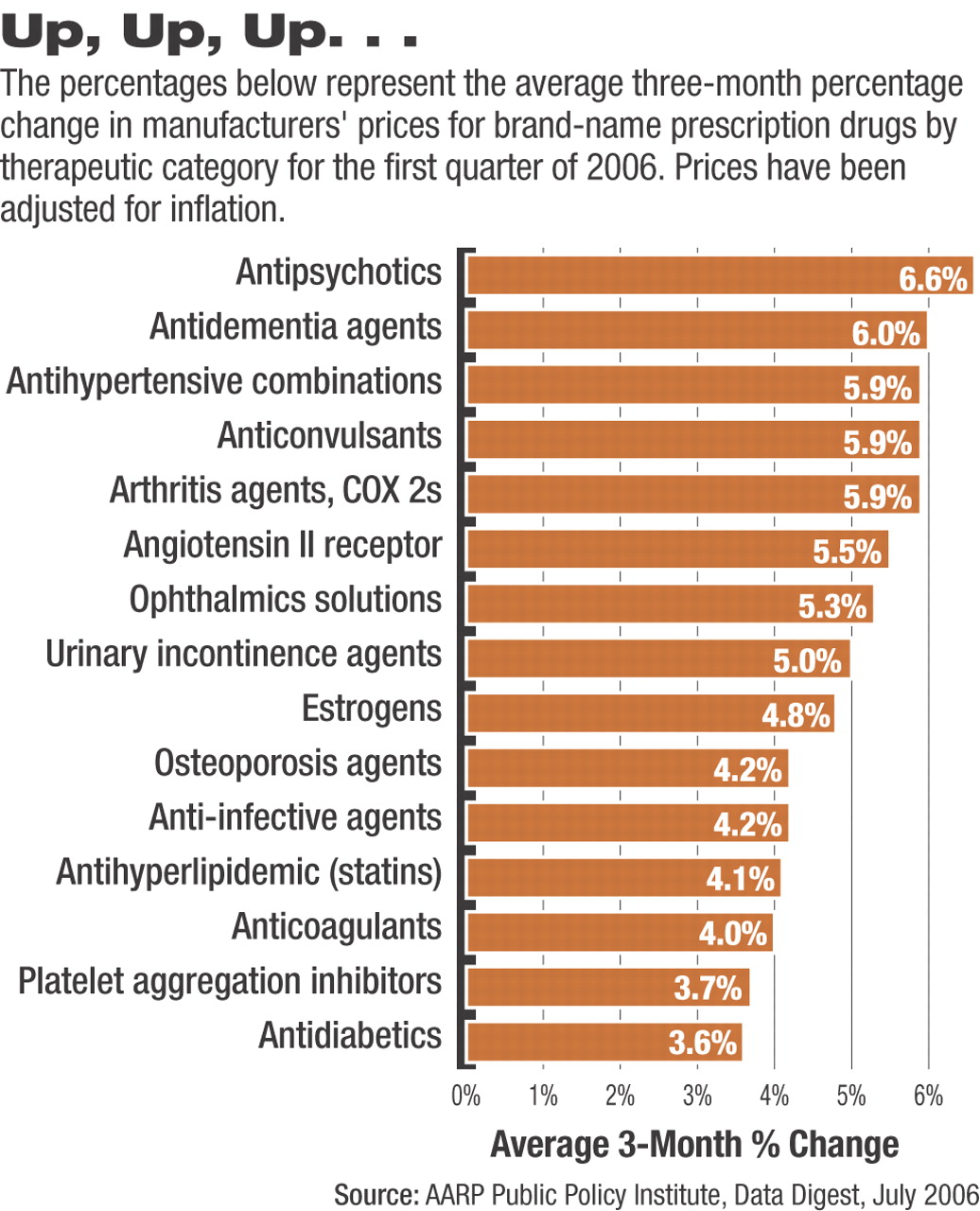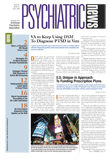Manufacturer prices for brand-name drugs rose 6.2 percent in the 12 months ending with the first quarter of 2006, more than one-and-a-half times the 3.5 percent rate of general inflation, according to an annual drug price survey by AARP (formerly the American Association of Retired Persons).
Moreover, in the first three months of 2006, the average price increase of 3.9 percent marked the steepest rate of increase for any three-month period since AARP began doing the survey more than six years ago.
The analysis is based on a sample of 197 brand-name drugs that are among the 200 most widely dispensed drugs or the 200 with the highest sales levels among retail and mail-order prescriptions filled by the AARP Pharmacy Service for 2003.
The seven brand-name drug products with the highest price increase during the first three months of 2006 had increases ranging from 8 percent to 13.3 percent. One of those was Seroquel (25 mg), which ranked seventh, with a price increase of 8 percent.
The drugs with the greatest increase in price during the first quarter of 2006 were Ambien 5 mg (13.3 percent); Combivent 120-20 mcg/act (12 percent); Atrovent inhaler 18 mcg/act (12 percent); Ambien 10 mg (9.9 percent); Proscar 5 mg (8.9 percent); and Lexapro 10 mg (8 percent).
When the data were grouped by therapeutic category, antipsychotics had the highest average three-month percentage change in price during the first quarter of 2006 of any specific category, with an increase of 6.6 percent in price. Antidementia drugs followed, with an increase of 6 percent. (Those two therapeutic categories were exceeded only by the nonspecific category of“ other therapeutic agents,” which increased by 7.1 percent.)
Among the 25 top-selling brand-name prescription drugs, Aricept (an antidementia drug ranking 15th in sales) had a price increase of 6 percent during the first quarter of 2006.
The AARP survey is prepared by the AARP Public Policy Institute and the PRIME Institute at the University of Minnesota.
“Through the end of the first quarter of 2006, annual increases in manufacturer prices charged to wholesalers for widely used brand-name prescription drugs, on average, continued to substantially exceed the rate of general inflation,” according to the report. “In fact, the first-quarter average-price increase (3.9 percent) was the highest ever for a first quarter during the more than six-year period of analysis in AARP's study of drugs widely used by older Americans.”
The report noted that with the enactment of the Medicare Modernization act (MMA), which established the Medicare Part D prescription program, AARP challenged manufacturers to keep the rate of price increase to the rate of general inflation.
Clifford Binder of the AARP Public Policy Institute told Psychiatric News that it could not be determined if the initiation of the new prescription-drug program in January played a role in pushing up the prices of drugs. “We are continuing to monitor the effect of the MMA on drug prices,” he said.
“While the rate of increase did slow down beginning in mid-2004, the first-quarter 2006 results represent a disturbing reversal of that trend,” according to the report. “it remains to be seen whether this is a one-time change or the beginning of a pattern of an increasing rate of price increase.”
The manufacturer price increases translate also into increases in the cost of therapy for patients. The average annual increase in cost of therapy for 187 widely used brandname drugs used to treat chronic conditions was $59.57 for the 12 months ending with the first quarter of 2006, compared with $47.43 in 2005 (Psychiatric News, November 4, 2005).
According to the report, a typical older American (who takes four prescription drugs a day) is likely to have experienced an annual increase on average in the cost of therapy of $238.28 for the first 12 months ending with the first quarter of 2006, assuming the drugs are brand-name products and the full price increase was passed along to the consumer.
“Trends in Manufacturer Prices of Prescription Drugs Used by Older Americans” is posted at<www.aarp.org/research/health/drugs/aresearchimport-869-2004-06--IB69.html>.▪

